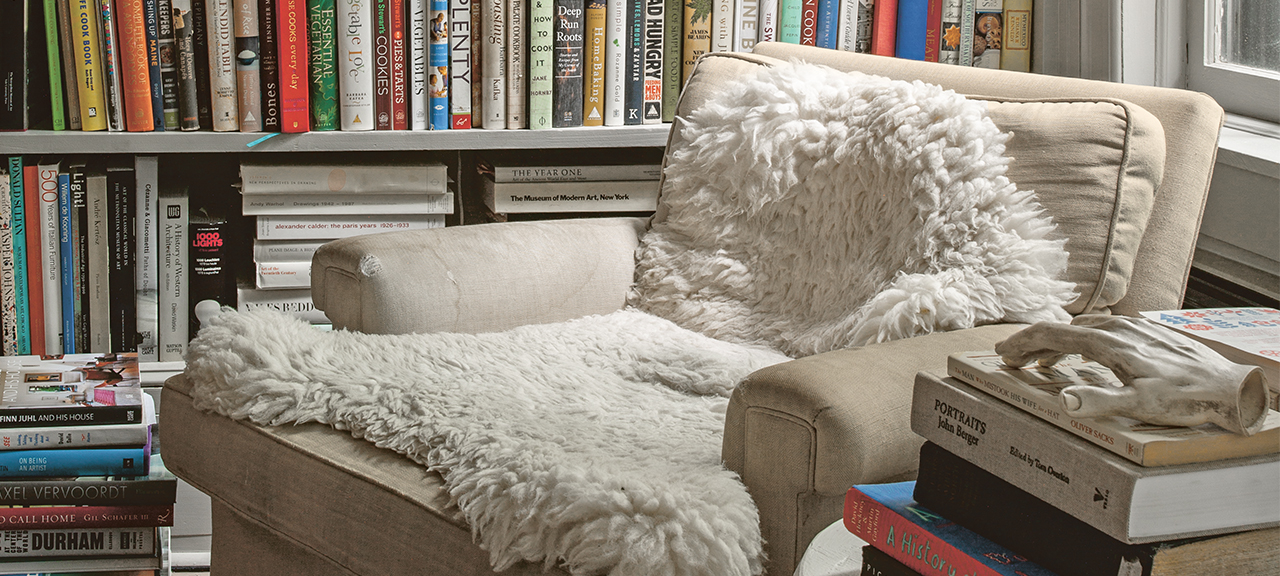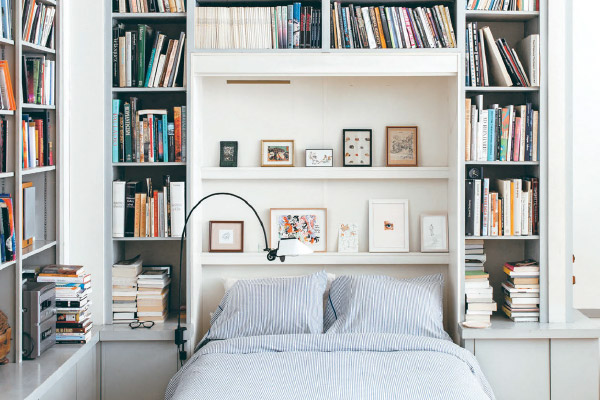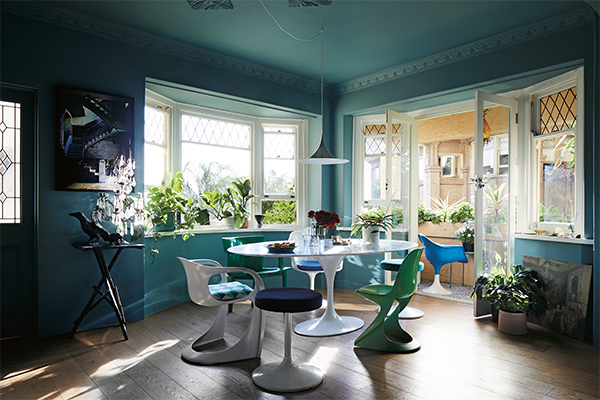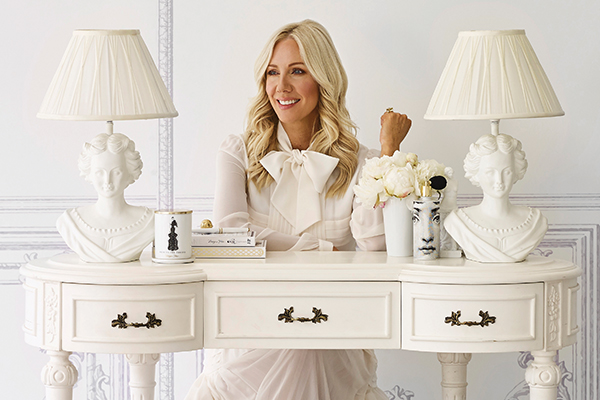Bibliobsession
29 Nov 2019 | Nina Freudenberger
What makes a house a home? What are the elements that move a house beyond its physical structure and provide the warmth that we all crave? It is about surrounding ourselves with things we love. In her new book, Bibliostyle, Nina Freudenberger comes to the conclusion that if you start with your passions, beauty will follow. And in this case, the beauty comes from the owners’ love of books.
“In every single seat in this house, you can pick up a book.”

But our connection to them goes beyond the material. In each house visited in Bibliostyle, the libraries were the heart of the home, meaningful to the collectors’ lives. Some subjects have working libraries they constantly reference; others fill their shelves with the potential pleasures of the unread. When we visited the homes, many people could find favorite books almost by osmosis, using systems known only to themselves.
"As we found repeatedly, surrounding yourself with books you love tells the story of your life, your interests, your passions, your values. Your past and your future.”
In choosing subjects to profile in Bibliostyle, we were not merely interested in the beautiful and perfectly curated rooms, the most extensive collections, or those shelves filled only with rare first editions—although there’s plenty of beauty on display. Bibliostyle is not about unattainable libraries, any more than it is about perfectly decorated homes.
Rather, it’s about the power of books to tell stories, in both the literal and figurative sense. As we found repeatedly, surrounding yourself with books you love tells the story of your life, your interests, your passions, your values. Your past and your future. Books allow us to escape, and our personal libraries allow us to invent the story of ourselves—and the legacy that we will leave behind.
There’s a famous quote attributed to Cicero: “A room without books is like a body without a soul.” If I suspected this before, I know it now. I hope you’ll find as much pleasure in discovering these worlds as we did.
Where Every Chair is the Reading Chair
KATHLEEN HACKETT & STEPHEN ANTONSON
Brooklyn, New York

“He doesn’t like it when I call them his obsession,” says the writer Kathleen Hackett of her husband, Stephen Antonson, indicating the mountains of books in the living room of their Carroll Gardens brownstone.
“My interest,” corrects Antonson, an artist who’s developed a cult following for his plaster of paris fixtures, furniture, and sculpture.
“Let’s say it’s on the spectrum,” says Hackett, whose own library—she’s a cookbook author—comingles with art and design books throughout the house.
Certainly, books are everywhere: In the gracious front room, which retains the details of the Victorian parlor it was, piles of art and design books fill the tables, surround the fireplace, are stacked on every surface. And that’s to say nothing of the bookshelves Antonson built throughout the house. (Their sons’ bunk bed even includes a Donald Judd–inspired built-in bookshelf filled with Hardy Boys.) While the space is, naturally, filled with the chalky creations for which Antonson is known, books provide splashes of colour and energy everywhere.
“Including the toilet,” adds Antonson.
“You had to go there,” says Hackett.
“The general rule in this house is no book ever gets thrown away. Ever. ”

“With the Internet, it’s like a road map,” says Hackett. “You know exactly what you’re looking for and you go there. Whereas with books—and this is true of cookbooks, too—they’re alive.”
The library contains the classics of design— Poire, Rand, Giacometti, Jean-Michel Frank—as well as Julia Child and Richard Olney. But there are often new acquisitions, depending on the project at hand. At the moment, Hackett is co-authoring a book on bread (there is sourdough starter burbling on the marble kitchen counter), so an entire shelf—next to a highly coveted reading spot known as “The Chair”—has been given over to bread tomes.
A trip to the Strand is always liable to result in five new books. “Part of what’s great there,” says Antonson, “is that they have exhibition and auction catalogs that often have pieces—prototypes or casts—that you’ll never see in other books, let alone on the Internet. And then they’ll throw in a free tote bag if you spend a hundred dollars . . . if the Strand ever went away, it’d send me into a spiral.”
So, how do they keep on top of it? “A lot of it is in the basement,” says Hackett, and the stone-floored cellar is indeed lined with bookfilled Metro shelves. “The general rule in this house,” says Antonson, “is that no book ever gets thrown away. Ever.” And so there are periodic donations: to used bookstores, thrift stores, and friends.
Books also move regularly between the house and Antonson’s Gowanus studio. “It’s a dynamic situation,” as he characterises it, and indeed, the studio contains several laden bookshelves.
Recently, the family has acquired its first TV, a controversial purchase, which now lives inside the fireplace—but is surrounded, and often covered, by art books. “It’s like snow,” says Hackett. “We dig it out from the books.”

Available now in bookstores and online
Click here to find your preferred online retailer





